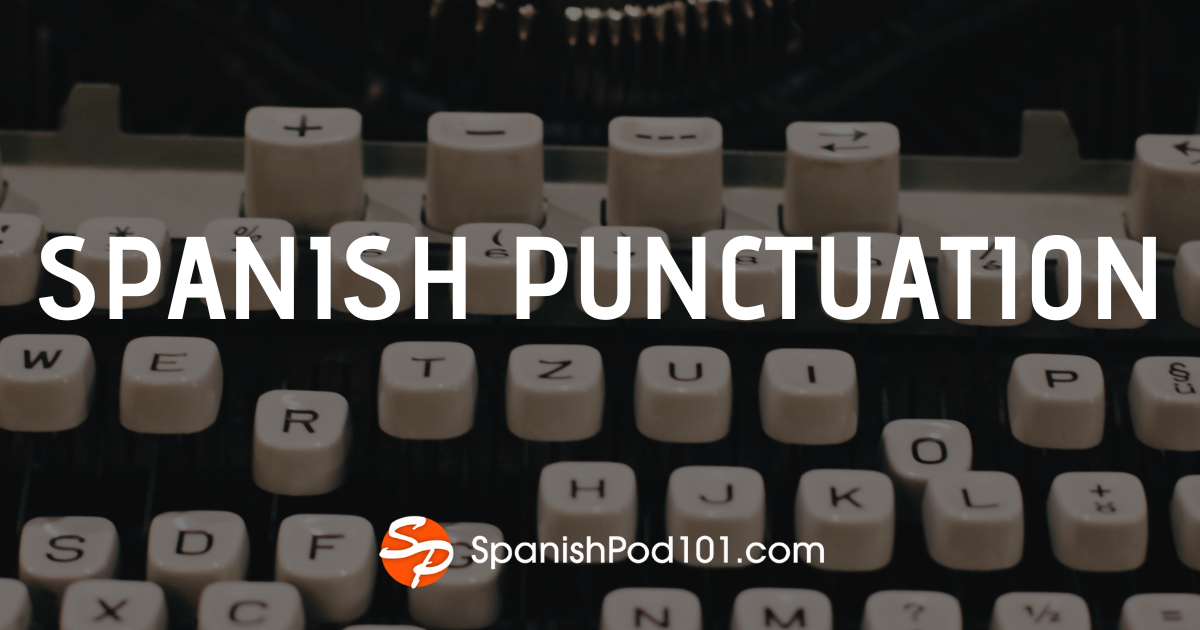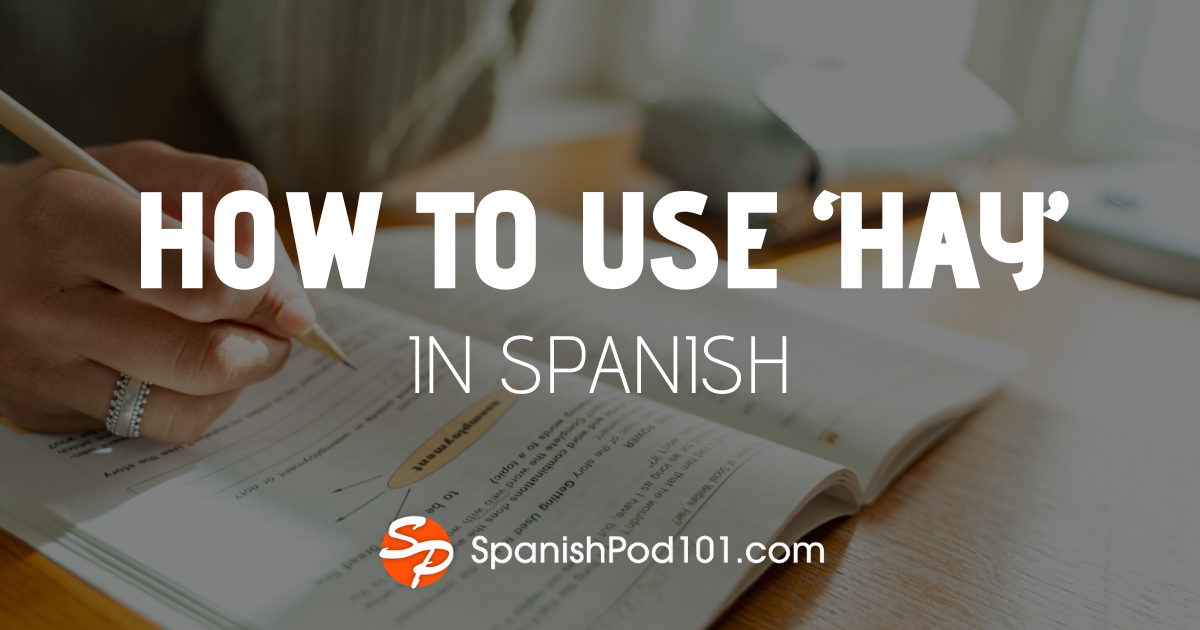One of the most daunting things when learning a new language, especially if that language is Spanish, is trying to master the verb tenses and conjugations. Spanish conjugation rules are quite different from those of English, and it might seem to you that there are too many Spanish tenses and endless exceptions. It might feel like a very long journey to embark on.
But don’t fear!
Spanish is a complex language, and yes, there are numerous tenses to master. Nevertheless, there are numerous tricks and rules to make it all a lot easier. It’s all about learning patterns and practice, practice, practice.
We want to help you out on your mission to become an expert in Spanish verb tenses. Because it’s our goal to make the process as painless as possible for you, we’ll cover only the most important tenses in Spanish: simple past, present, and future.
After mastering these tenses, you’ll be able to start building more complex sentences and engaging in conversations. Once you have these down, we recommend that you continue your studies by learning all of the other complex tenses and irregular verbs.
Ready to take a huge step forward in your Spanish learning with SpanishPod101?
 Table of Contents
Table of Contents
- Spanish Tenses in a Nutshell
- Present Simple Tense: El Presente Simple
- Past Simple Tense: El Pasado Simple
- Simple Future Tense: El Futuro Simple
- Irregular Verbs
- Auxiliary Verbs
- La despedida
1. Spanish Tenses in a Nutshell
The three main tenses in Spanish are:
- Presente (Present)
- Pasado / Pretérito (Past)
- Futuro (Future)
There are also three modes (sometimes called ‘moods’) in which these tenses can be conjugated:
- Indicative
- Subjunctive
- Imperative
There are also several variations of these tenses and modes, which allow you to express verbs in a greater variety of contexts. A great example of this is the Spanish conditional, a form that’s used to talk about things that might happen if another thing happens or a certain condition is met.
So how do you know which Spanish tenses to learn first?
As a beginner, you only need to worry about mastering the three basic tenses: simple present, past, and future. By learning these first, you’ll get familiarized with the structures and patterns used to conjugate verbs in Spanish—more importantly, you’ll be able to start communicating! From then on, learning everything else will be easier.
→ For a more extensive overview of all Spanish tenses, visit our Spanish Verbs Guide.
1.1 Key Things to Know Before You Start Conjugating
Before we get ahead of ourselves, there are two basic things you need to learn before diving into Spanish conjugation:
1) Verbs in their infinitive form
2) Pronouns
The conjugation pattern to be used for each tense will depend on the type of verb you’re using (its ending in the infinitive) and the subject of the sentence (the pronoun).
What do we mean by the verb’s ending? Unlike English, which adds a “to” before any verb to turn it into its dictionary form, Spanish infinitive forms are defined by how the verb ends (the verb’s last two letters). Each verb ends in either -ar, -er, or -ir. This is how we classify verbs in order to conjugate them.
| Verbs in infinitive form | ||
| Verbs ending in -ar | Verbs ending in -er | Verbs ending in -ir |
| hablar (to speak) | comer (to eat) | vivir (to live) |
| soñar (to dream) | perder (to lose) | sentir (to feel) |
| cantar (to sing) | beber (to drink) | salir (to exit) |
| pensar (to think) | correr (to run) | escribir (to write) |
| dejar (to leave) | leer (to read) | dormir (to sleep) |
| Pronouns | |
| Yo | I |
| Tú | You (Informal)* |
| Usted | You (Formal) |
| Él | He |
| Ella | She |
| Nosotros | We |
| Ustedes | You |
| Ellos | Them |
| Vosotros* | You |
→ For more verb examples, visit our list of the 50 Most Common Verbs.
*A couple of notes:
There are some regional variations regarding formal and informal uses of “you.” While most countries in Latin America use tú for informal conversations and usted for formal ones, usted is used as a general form in some South American countries.
Vosotros is used only by Spanish speakers in Spain, while standard Latin American Spanish uses ustedes. We’ll focus on standard Latin American Spanish in this article, but we wanted to let you know about the variations so they don’t come as a surprise to you.
Okay, now you know the key elements. Let’s start conjugating verbs!
2. Present Simple Tense: El Presente Simple

Every weekend I cook pasta. – Cada fin de semana cocino pasta.
So let’s get started!
As we mentioned, to conjugate a verb you have to use its infinitive form. From that form, you’ll extract the root of the verb and add a different ending depending on the tense and pronoun.
Let’s see an example with the verb comer (to eat):
→ Infinitive form: Comer→ Root: Com
→ Present simple tense conjugation: Yo com(o) – I eat
Remember: The ending you need to add will change according to the ending of the infinitive verb. So let’s see how to conjugate verbs in the present simple tense for every ending.
2.1 Simple Present Tense Verbs Ending in –AR
| Verb: Cocinar (To Cook) | |
| Pronoun | Simple Present Tense Conjugation |
| Yo (I) | Cocin+o |
| Tú (You) | Cocin+as |
| Usted (You) | Cocin+a |
| Él (He) | Cocin+a |
| Ella (She) | Cocin+a |
| Nosotros (We) | Cocin+amos |
| Ustedes (You) | Cocin+an |
| Ellos (They) | Cocin+an |
Do you see a pattern here? Yes! The letter a from the -ar ending stays most of the time; remembering that will make it easier for you to remember the formulas for conjugating AR verbs in the present tense in Spanish. Just practice and memorize these endings, and it will get much easier to learn the rest of the tenses and forms.
2.2 Simple Present Tense Verbs Ending in -ER
| Verb: Comer (To Eat) | |
| Pronoun | Simple Present Tense Conjugation |
| Yo (I) | Com+o |
| Tú (You) | Com+es |
| Usted (You) | Com+e |
| Él (He) | Com+e |
| Ella (She) | Com+e |
| Nosotros (We) | Com+emos |
| Ustedes (You) | Com+en |
| Ellos (They) | Com+en |
We told you it would get easier and it did, right? The formulas here are pretty much the same as those for AR verbs; you just have to switch the letter a for e.
2.3 Simple Present Tense Verbs Ending in -IR
| Verb: Vivir (To Live) | |
| Pronoun | Simple Present Tense Conjugation |
| Yo (I) | Viv+o |
| Tú (You) | Viv+es |
| Usted (You) | Viv+e |
| Él (He) | Viv+e |
| Ella (She) | Viv+e |
| Nosotros (We) | Viv+imos |
| Ustedes (You) | Viv+en |
| Ellos (They) | Viv+en |
Okay, this one is a bit trickier. IR verbs have pretty much the same conjugation as ER verbs, changing only for the pronoun we, where the i stays.
We recommend that you start learning the simple present tense first; once you’re completely confident with this tense, move on to the next one. Mastering the simple present tense in Spanish will allow you to start communicating more fluently, have conversations, and start identifying patterns in conjugation that will be very useful when learning the other tenses.
3. Past Simple Tense: El Pasado Simple

Yesterday, my friends and I ate salad. – Ayer, mis amigas y yo comimos ensalada.
Once you’ve mastered the simple present tense, you can move on to the simple past tense. And we have some good news for you! This one will be easier. In the Spanish past tense, ER and IR verbs have the exact same conjugation. There are also many patterns you’ll identify that will make your learning go smoother.
So let’s see how to conjugate for the simple past tense in Spanish!
3.1 Simple Past Tense Verbs Ending in -AR
| Verb: Cocinar (To Cook) | |
| Pronoun | Simple Past Tense Conjugation |
| Yo (I) | Cocin+é |
| Tú (You) | Cocin+aste |
| Usted (You) | Cocin+ó |
| Él (He) | Cocin+ó |
| Ella (She) | Cocin+ó |
| Nosotros (We) | Cocin+amos |
| Ustedes (You) | Cocin+aron |
| Ellos (They) | Cocin+aron |
Keep an eye on the accents, because they’re very important. The tense changes depending on whether the accent is absent or present. For example: cocino means “I cook” but cocinó means “You/He/She cooked.”
3.2 Simple Past Tense Verbs Ending in -ER
| Verb: Comer (To Eat) | |
| Pronoun | Simple Past Tense Conjugation |
| Yo (I) | Com+í |
| Tú (You) | Com+iste |
| Usted (You) | Com+ió |
| Él (He) | Com+ió |
| Ella (She) | Com+ió |
| Nosotros (We) | Com+imos |
| Ustedes (You) | Com+ieron |
| Ellos (They) | Com+ieron |
3.3 Simple Past Tense Verbs Ending in -IR
| Verb: Vivir (To Live) | |
| Pronoun | Simple Past Tense Conjugation |
| Yo (I) | Viv+í |
| Tú (You) | Viv+iste |
| Usted (You) | Viv+ió |
| Él (He) | Viv+ió |
| Ella (She) | Viv+ió |
| Nosotros (We) | Viv+imos |
| Ustedes (You) | Viv+ieron |
| Ellos (They) | Viv+ieron |
As we mentioned, ER and IR verbs have the exact same conjugation in the past tense. And we have even more good news: The simple future tense in Spanish is the easiest of the three!
→ If you’re curious about irregular verb conjugation in the past tense, check out this video:
4. Simple Future Tense: El Futuro Simple

When I retire, I will live on the beach. – Cuando me retire viviré en la playa.
As we promised, everything gets even easier at this point. The future simple tense uses the same conjugation pattern for all three verb forms. The only difference is that to conjugate for the future tense in Spanish, you don’t extract the verb’s root form; rather, you keep the verb in its infinitive form and then add the conjugation.
Let’s see how!
4.1 Simple Future Tense Verbs Ending in -AR
| Verb: Cocinar (To Cook) | |
| Pronoun | Simple Future Tense Conjugation |
| Yo (I) | Cocinar+é |
| Tú (You) | Cocinar+ás |
| Usted (You) | Cocinar+á |
| Él (He) | Cocinar+á |
| Ella (She) | Cocinar+á |
| Nosotros (We) | Cocinar+emos |
| Ustedes (You) | Cocinar+án |
| Ellos (They) | Cocinar+án |
4.2 Simple Future Tense Verbs Ending in -ER
| Verb: Comer (To Eat) | |
| Pronoun | Simple Future Tense Conjugation |
| Yo (I) | Comer+é |
| Tú (You) | Comer+ás |
| Usted (You) | Comer+á |
| Él (He) | Comer+á |
| Ella (She) | Comer+á |
| Nosotros (We) | Comer+emos |
| Ustedes (You) | Comer+án |
| Ellos (They) | Comer+án |
4.3 Simple Future Tense Verbs Ending in -IR
| Verb: Vivir (To Live) | |
| Pronoun | Simple Future Tense Conjugation |
| Yo (I) | Vivir+é |
| Tú (You) | Vivir+ás |
| Usted (You) | Vivir+á |
| Él (He) | Vivir+á |
| Ella (She) | Vivir+á |
| Nosotros (We) | Vivir+emos |
| Ustedes (You) | Vivir+án |
| Ellos (They) | Vivir+an |
As you can see, this tense is the easiest of the three. You just have to learn the different formulas and apply them to all verbs in their infinitive form. There’s just one important thing to keep in mind:
Unlike English speakers, Spanish speakers often use the simple future tense to talk about a distant future; there’s a different tense to talk about the near future. But don’t worry about it yet! Just keep it in mind.
5. Irregular Verbs

I am a culinary student. – Yo soy estudiante de cocina.
Okay. Now that you have the basics, you can start thinking about irregular verbs. Some of the most commonly used verbs in Spanish happen to be irregular.
| Irregular Verbs (Infinitive Form) | |
| Ser | To be (Permanent quality) |
| Estar | To be (Temporary state) |
| Haber | To have (Auxiliary verb) |
| Tener | To have |
| Hacer | To do |
| Poder | To be able |
| Decir | To say |
| Ir | To go |
| Ver | To see |
| Dar | To give |
Irregular verbs have their particular patterns of conjugation. Let’s see a brief example of how to use one of the most common irregular verbs: ser (to be).
- Yo soy estudiante de idiomas. → I am a language student.
- Tú eres estudiante de idiomas. → You are a language student.
- Él es estudiante de idiomas. → He is a language student.
- Ella es estudiante de idiomas. → She is a language student.
- Nosotros somos estudiantes de idiomas. → We are language students.
- Ustedes son estudiantes de idiomas. → You are language students.
You’ll want to study all of these verbs separately. You’ll find many patterns that will help you learn them faster, but it’s a matter of dedication and practice to completely master them.
→ If you want to learn more irregular verbs, don’t forget to check out this video:
6. Auxiliary Verbs
Last but not least, let’s talk about the use of auxiliary verbs in Spanish. You’ll want to consider these verbs as your next step after learning the three basic tenses and mastering some of the irregular verbs’ conjugations.
Just like in English, an auxiliary verb is used along with a main verb to indicate a tense or to indicate the way in which the verb should be interpreted. It’s a verb that affects the meaning of the main verb.
The most common auxiliary verbs in Spanish are:
Ser → To be
Estar → To be
Hacer → To do
Haber → To have
Let’s see an example:
- He estudiado toda la tarde. → I have studied all afternoon.
However, it’s important to note that auxiliary verbs are used much less in Spanish than they are in English. This is because Spanish has conjugation forms to indicate tenses that are often indicated with auxiliary verbs in English. An example of this is the auxiliary verb “to do.”
For example:
- English: Do you cook?
- Spanish: ¿Cocinas?
So in Spanish, you just conjugate the verb in the simple present tense; there’s no need to add an auxiliary verb. For now, focus on the three main tenses. This will all be clearer by the time you start learning about auxiliary verbs in depth.
La despedida
In this guide, you’ve learned all the basics about Spanish verb tenses. Before you can expect to master all Spanish tenses, you’ll need to focus on learning the simple present, past, and future. With these three tenses alone, you can start engaging in conversations and building your skills.
Remember that SpanishPod101 offers numerous resources to help you learn and practice your Spanish. Make sure to check out our verb lists, pronunciation guides, and lesson library. If you need extra help, you can also try out our Premium PLUS service, MyTeacher. This will give you the personal guidance of a private teacher to help you out with all your technical questions, pronunciation, and anything else you need.
Before you leave: Is there anything about these basic tenses that you’d still like to know?
Happy learning with SpanishPod101. ¡Hasta luego!










